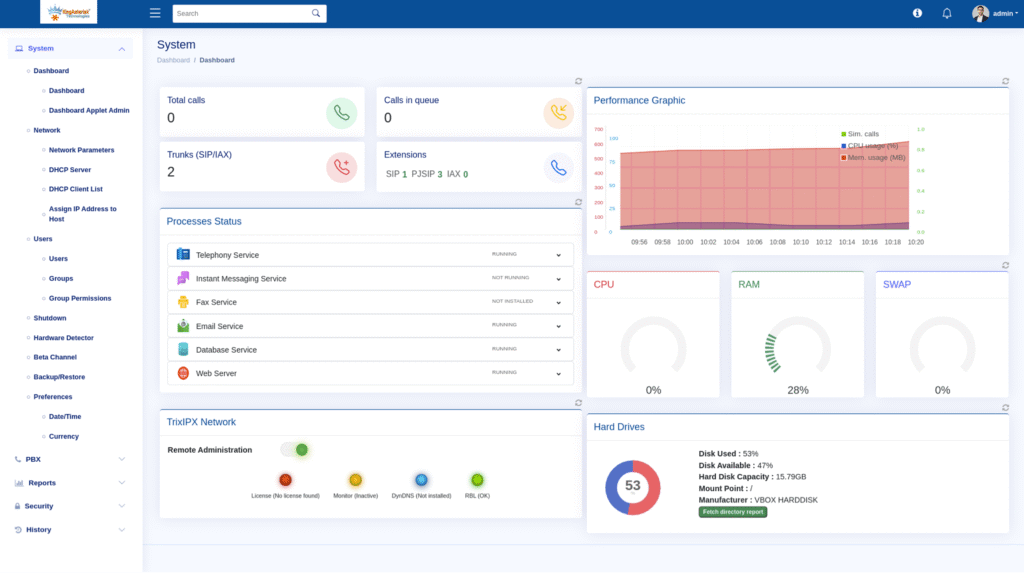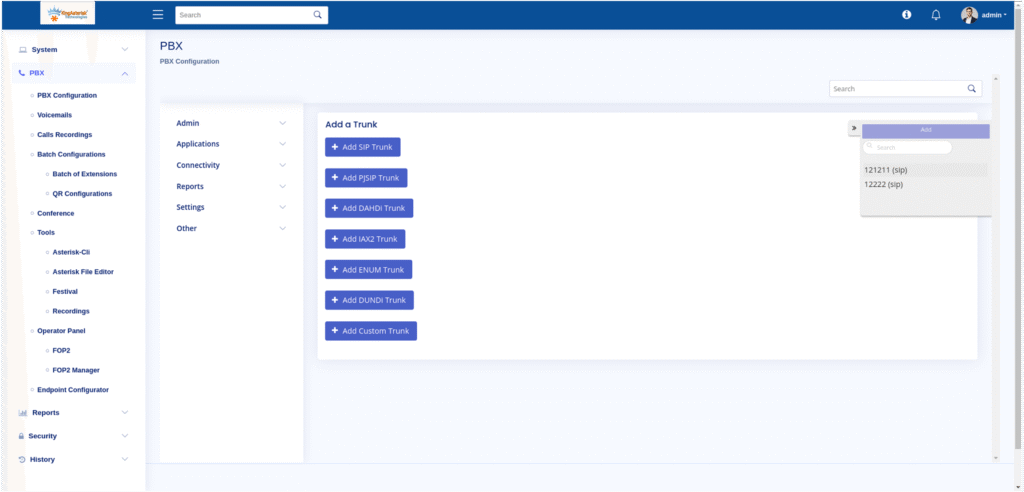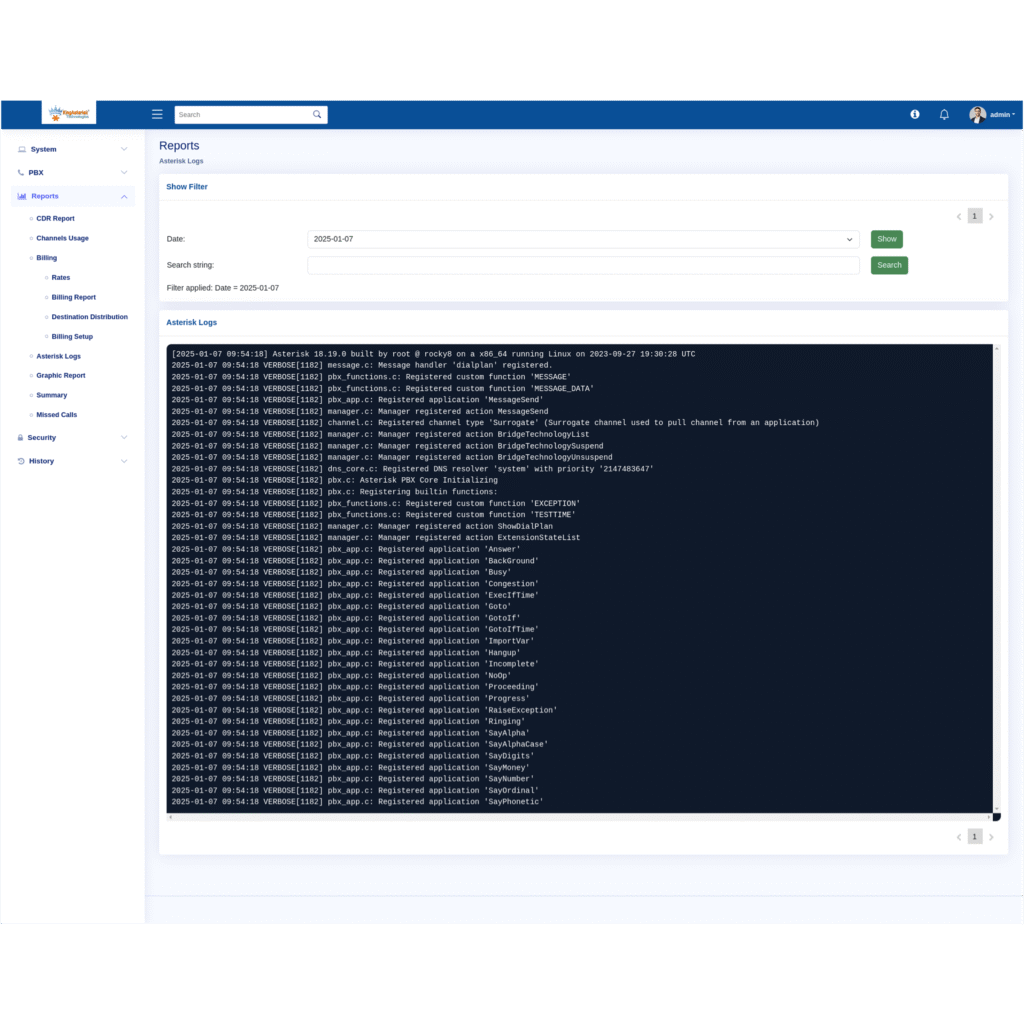
If you run a telecom business, you already know that every second of downtime kills revenue and every dropped call ruins customer trust. That’s why more businesses are shifting to advanced Asterisk PBX configuration instead of sticking with outdated telecom setups. Here’s the fun part: Asterisk isn’t just some geeky open-source PBX software.
It’s a beast when it comes to VoIP PBX flexibility, call routing, IVR automation, and hybrid deployments. I’ll share industry insights, configuration tricks, and even what’s trending in 2025 for PBX systems.
Why Asterisk PBX Configuration Matters for Telecom Businesses
You can’t run a serious telecom business with a sloppy PBX system. Think about it:
- Customers expect zero dropped calls and lightning-fast responses.
- Call centers need dynamic call routing, IVR menus, and predictive dialing.
- Remote teams demand secure cloud PBX access.
- And telecom providers want multi-tenant PBX setups that scale with user demand.

That’s where Asterisk PBX configuration separates the winners from the rest. The core of Asterisk PBX configuration is the process of fine-tuning the open-source software.
In other words: bad configuration = dropped calls. Advanced configuration = unstoppable telecom system.
Most Talked About: Smart Toll Free Number Management
Core Techniques in Advanced Asterisk PBX Configuration
The real value of an advanced Asterisk PBX setup is not just in connecting calls, but in the creation of a secure, expandable, and efficient communication hub. Through strategic techniques, companies can improve call routing, enhance dependability, and build a system that will last. Let’s break down the must-have advanced techniques every telecom business should use.
1. Secure Asterisk PBX Setup
Security is no longer optional. Telecom fraud costs companies $38 billion annually (2024 data, GSMA). In 2025, experts predict AI-powered SIP attacks will rise.
To protect your PBX:
- Enable SIP over TLS and SRTP for encrypted calls.
- Lock down your SIP.conf and extensions.conf with strict rules.
- Configure fail2ban and firewall rules to stop brute-force attacks.
- Add zero-trust security for PBX (trending 2025 keyword).
This isn’t paranoia—it’s survival.
2. Optimized Dial Plan Configuration
Your dial plan is the brain of Solving error in Asterisk. A well-designed dial plan is the foundation of an effective Asterisk PBX. Businesses that manage their call flow, set up routes to keep costs down, and use multi-tiered IVR can lower expenses, improve call quality, and offer a flawless customer journey.
A poorly written dial plan equals chaos.
Best practices:
- Use custom dial plan scripting to manage inbound/outbound routing.
- Add Least Cost Routing (LCR) for cheaper telecom bills.
- Configure multi-level IVR menus for better customer experience.
- Enable dynamic caller ID configuration for outbound campaigns.
Think of it like a GPS for your calls—fast, smart, and efficient.

3. High Availability & Scalability
Telecom isn’t static. Some days you manage 50 calls, others 5,000 calls per second. A well-configured Asterisk PBX with high availability features will make sure your business stays online. With multiple servers working together (clustering), calls being spread out (load balancing), and a system that automatically switches to a backup when needed (failover). You can handle any amount of traffic, from a small number of calls to a massive volume, without any service problems.
Techniques that keep you afloat:
- Clustered Asterisk deployment for redundancy.
- Load balancing with Kamailio/OpenSIPS as SIP proxies.
- PBX failover configuration with hot backups.
- Monitoring via Asterisk PBX logs troubleshooting and real-time dashboards.
2025 trend? AI-driven VoIP monitoring that predicts call quality issues before they happen.
4. Multi-Tenant PBX Configuration
If you’re a service provider, you can’t survive without multi-tenant setups. A multi-tenant PBX configuration allows service providers to run multiple independent telecom setups on a single Asterisk server. Each tenant gets isolated call routing, billing, and extensions. Providers enjoy centralized management and cost efficiency.
- Centralized PBX administration panel.
- Real-time billing integration with VoIP gateways.
- Multi-tenant PBX architecture optimized for resource allocation.
Imagine running 10 different call centers on one Asterisk server. That’s multi-tenant in actio
5. Cloud & Hybrid Deployments
The pandemic made one thing clear: clouds are the future. But some telecom giants still rely on on-prem PBX. The solution? Hybrid PBX systems.
- Use cloud-native PBX architecture for flexibility.
- Add edge computing for telecom services for ultra-low latency.
- Configure WebRTC PBX integration for browser-based calls.
- Enable 5G-ready VoIP PBX to handle voice + video seamlessly.
By 2025, cloud telephony solutions are expected to hit $98B market value (source: Gartner). Are you ready to grab your slice?
Asterisk PBX Configuration Best Practices for Modern Telecom
Okay, enough with the theory. Let’s get into best practices telecom operators swear by. Proper configuration of your Asterisk PBX ensures a dependable and secure phone system that can handle growth. Implementing strategies like optimizing dial plans, choosing strong audio codecs, and monitoring performance live helps businesses.
- Keep configs modular – separate SIP, extensions, voicemail, queues.
- Use strong codecs – G.711 for quality, G.729 for bandwidth, Opus for flexibility.
- Monitor everything – track packet loss, jitter, and call latency.
- Test redundancy – simulate outages before they happen.
- Update regularly – outdated PBX = hacker’s playground.
Pro tip: Always run real-time call analytics in Asterisk. It’s like a fitness tracker for your telecom health.
Latest Trends: Live Demo Of Our Solution
Real-World Insights – How Businesses Use Advanced Asterisk PBX
Businesses across industries use advanced Asterisk PBX configuration to cut costs, improve reliability, and unlock smarter call handling. From call centers optimizing outbound campaigns to enterprises securing remote team communication, Asterisk delivers flexibility that traditional PBX systems can’t match. Let’s bring this down to earth with real business cases.

Call Centers use Asterisk PBX configuration for inbound and outbound call centers with predictive dialers and custom reporting. Enterprises deploy secure remote access setup in Asterisk PBX for hybrid teams. VoIP Providers use step-by-step Asterisk PBX configuration for SIP trunk providers to offer low-cost telecom services.
FAQs About Asterisk PBX Configuration
Q1: Is Asterisk PBX still reliable for telecom businesses in 2025?
Yes. With proper configuration, Asterisk PBX is as reliable as commercial systems. Plus, it’s open source, flexible, and scalable.
Q2: What’s the difference between cloud PBX and on-prem Asterisk PBX?
Cloud PBX runs entirely online, while on-prem setups run on your hardware. Many businesses now prefer hybrid PBX systems for maximum flexibility.
Q3: Can Asterisk PBX integrate with CRMs and AI tools?
Absolutely. With APIs and plugins, you can connect Asterisk PBX with CRMs, AI-driven call analytics, and even UCaaS platforms.
Wrapping Up: Time to Upgrade Your PBX Game
Here’s the truth: telecom is evolving faster than ever. Customers demand speed, clarity, and 24/7 availability. And outdated PBX setups won’t cut it anymore. If you’re serious about building a future-ready telecom business, you need advanced Asterisk PBX configuration—secure, scalable, and AI-enhanced.
At KingAsterisk Technology, we help businesses configure, secure, and scale their PBX systems without the headaches. Ready to modernize your telecom setup? Let’s talk today.





